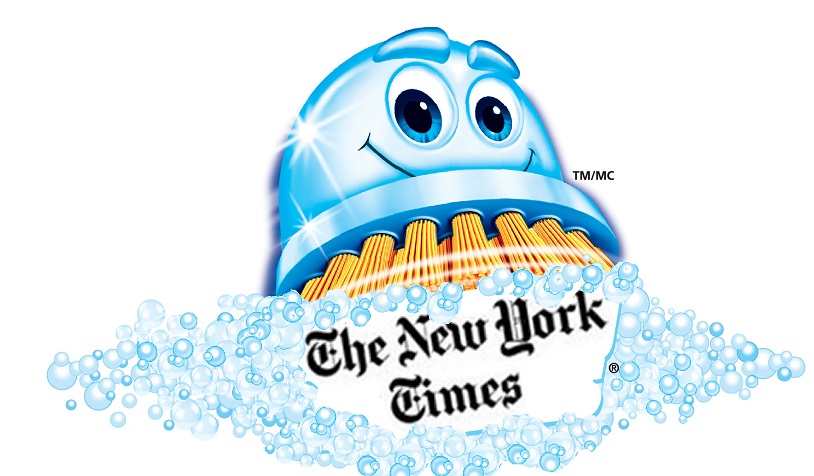The NYT is the paper that covered up the Holocaust, denied the USSR’s starvation of millions of Ukrainians (3-12 million). It has taken to calling itself the “paper of record”, but in reality, it’s the paper of obfuscation, denial, and partisan political intrigue.
H/T: Mollie Hemingway: ”
If you read nothing else today, read this exhaustive evisceration of the New York Times’ central role in the dangerous and false conspiracy theory of Trump-Russia collusion. By Tom Kuntz, a 28-year veteran of the Times, this piece should win awards.
The NY Times Used to Correct Its Whoppers. But Not These Two. Here’s Why.
By Tom Kuntz, RealClearInvestigations
The New York Times is widely admired for owning up to its errors. In addition to the corrections it runs each day, it has a tradition of publishing extensive Editor’s Notes and even full-length investigations when it has determined that flawed reporting misled readers and botched the rough first draft of history. Since 2000, these have included lengthy reassessments of its reporting on whether a Chinese American scientist, Wen Ho Lee, had collaborated with the Chinese; the false stories filed by a troubled black reporter, Jayson Blair, and articles regarding weapons of mass destruction in Iraq.
During the last few years the Times has published two other sets of deeply flawed articles that also demand such extended corrections: “The 1619 Project” and its Trump-Russia coverage. It is a sign of how much the Times, and mainstream journalism in general, have changed that it appears highly unlikely the “paper of record” will correct the record.
To the contrary, the 1619 Project – blasted by leading historians for gravely distorting the history and legacy of slavery in America – has already been awarded a prestigious George Polk Award and appears to be a front-runner for a Pulitzer Prize this coming Monday.
Similarly, in the face of the Mueller Report’s finding last year of no Trump-Russia collusion, the Times is not giving back the 2018 Pulitzer Prize it won with the Washington Post for coverage that uncritically pushed the conspiracy theories of anti-Trump intelligence sources. (Nor is the Post.) As it withholds from its readers any detailed explanation of its relationship with a vital source of its misleading coverage – Fusion GPS, producer of the discredited Steele dossier at the heart of the affair – the Times continues to publish the spin of intelligence sources trying to discredit or at least blunt continuing federal inquiries into what happened.
The Trump-Russia coverage, even with caveats pinning assertions to sources rather than solid evidence, clearly created a false impression that Donald Trump and his team were in cahoots with the Russians. It’s hard to believe that former Times Executive Editor Max Frankel would have written an op-ed for the paper declaring that an “obvious bargain [was] reached during the campaign of 2016” between the Trump campaign and Russia if he hadn’t read those unmistakable insinuations in the Times. The Trump campaign is suing the Times for libel over Frankel’s claims. (Full disclosure: I was hired as an editor at the Times in 1988 under Frankel.)
A fuller accounting by the Times is especially necessary because the media’s pushing of Trump-Russia conspiracy theories was central to an unprecedented and possibly criminal effort to subvert or remove a president under false pretenses. Unless the Times and other sources come clean about who was feeding them misleading and partisan information, we may never understand this momentous chapter of history.
Protecting confidential sources is, of course, one of the bedrocks of journalism. The free flow of information depends on people being able to share hard truths without jeopardizing their careers or lives.
But not when sources lie or mislead. When that happens, the confidentiality deal is off and “your responsibility would be to set the record straight,” Lynn Walsh, ethics chair of the Society of Professional Journalists, confirmed to me recently in a general conversation about SPJ’s standards for anonymous sourcing.
When sources engage in gross deception on a matter of such import, even committing national security crimes in the process, the news media involved should honor their higher duty – to their readers or viewers – to expose the malfeasance and correct the record.

